Adventures of OUR very own Aircraft Technicians
During a worldwide pandemic, it is easy to lose sight of our inspirations or forget some of the amazing experiences that have helped shape who we are. We asked a few of our long-time employees if they would take a minute to reflect back on their careers and share a time that had really impacted them – anything from the craziest or weirdest situation they’ve been in, to the funniest or scariest scenario. Here are a few of their stories…
From the desk of Pat Field:
At the time, fear was the furthest thing from my mind, but I have to think that in the 48 years since being a semi-adult in aviation, my most terrifying experience was a flight from Brantford to Ottawa.
Nadia, whom I had recently married, my older brother Bud, and his then girlfriend, Jane, came along. As my Mom used to say, this would be a “lark” – with added boasting rights that we had flown to Ottawa just for dinner! (The “girls” especially liked that part.)
A little background… I had 300 hours since I received my pilot’s license in April of 1973. About 95% of that was in my C-150, which I took delivery of the day after I acquired my pilot’s licence. I had a couple of hours in a Cherokee 140, a whopping 1 and 1/2 hours in retractable aircraft, and NO instrument time. Not a requirement for a private pilot license before the turn of the century. Geez, I sound old.
It was a dark and stormy night… Oh wait, no, it was the middle of the day in Dec of 1975.
My oldest brother Terry had “checked me out” in the 1947 Beechcraft bonanza (number 95 off of the assembly line), in a grueling two circuit flight test. Total time, 15 minutes.
The plan was to drop the aircraft at the Ottawa International Airport, have dinner in the main terminal, and return that evening with another V35, albeit comparatively speaking, an almost new 1953 model!
I was VFR only, the aircraft was VFR only, no heated pitot, a Com, VOR, and an ADF. I do not recall if the nav aids worked, as that was early in my flight experience, and I hadn’t figured out how to use them anyway. No need, I had my trusty paper maps.
According to Flight Service, it was great VFR all the way to Ottawa, and points in between. The temperature was around freezing on the ground. (ominous music)
We all piled into the aircraft, Nadia and Jane in the back (Jane’s first flight in any aircraft.) Bud and I were up in the “business end”, although Bud was not yet a pilot.
The 1947 Bonanza panel was pretty much stock, as panel upgrades were few and far between back then. It had the standard “six pile” of instruments – an old drum-style directional gyro, 4” attitude gyro, turn and bank, VSI, airspeed, and of course altimeter – all spread out over half of the instrument panel. The turn and bank was at the top center of the instrument panel, adding a whole new dimension to an instrument scan!
We climbed up to 5500′ and as we approached Hamilton, it was apparent the weather gods had not been communicating with the mortals’ Flight Service.
I called Toronto to let them know we were VFR to Ottawa and would be flying down the center of Lake Ontario to stay out of the wall of snow along the lake shore. Well, at 5500′ over Lake Ontario, before it freezes over, there are some pretty cool weather patterns of their own, and soon we were into the clouds, snow, and oh yeah, ice. (Never thought of turning around, we would miss dinner!)
Bonanzas are a slippery aircraft, and the early ones had earned a nasty reputation. There had been a rash of fatal accidents because either the tail, wings, or both, had “departed” in flight. This particular aircraft still had the original steel spar, which was a cause for additional concern.
It quickly became evident that I had better cram 40 hours of instrument training into something less than that of 2 minutes! I desperately tried to figure out why the instruments were not indicating properly. (As anyone who has flown into instrument conditions without training will tell you, the instruments ALWAYS fail as soon as you enter the clouds.) Only this time it was true!
The vacuum pump had gone on vacation. No worries, I would fly with what I had left. Turns out, not much. The airspeed was no longer indicating properly, as the pitot tube had iced over (remember, NO pitot heat.) Although I probably wouldn’t have thought to switch it on anyway. Now I WAS in a bind. And worse still, the ice had accumulated so quickly that the 54” ADF stainless steel whip antenna, mounted directly forward of the windshield on the center line, was whipping back and forth so violently I thought it was going to tear itself out of the skin. It was about that time, that I somehow realized we were entering into the dreaded “death spiral.”
That is about when your life flashes in front of your eyes, but for some reason, I only got a screen shot (maybe not enough memory) and a Toronto Star newspaper headline flashed, “Small aircraft breaks up in Flight, Four people perish.” Right then Toronto ATC called me and asked where I was going.
I immediately called back on a fancy new pilot communication tool – a headset. (Being in the avionics industry, we always had the latest and greatest available!)
When I heard my voice in the earphones, (sidetone, not the other ones) it inexplicably instilled a sense of calm in my voice. At that very instant, I was given a renewed sense of survival, and I focused (I mean, I REALLY focused) on the few instruments I had left.
Somehow I was able to level the aircraft, slow it down, and continue the descent at a controlled rate. What I quickly learned in those few moments (that seemed like hours) was that the ADF antenna turned out to be my new airspeed indicator. The faster we went, the more violent the whipping. When the aircraft was slower, it would only deflect 15o-20o on either side.
We broke out at about 1000′, regained our composure (Nadia could tell something was up by the terrified looks on the “crew’s” faces!) Jane was fast asleep. Lucky thing, as she probably would never have gotten into another airplane again! We assured them we had it completely under control. (Those gals would believe anything back then… now, not so much.)
We limped eastward to Kingston, flying about 85 miles per hour. Once on the ground at Kingston, with the remainder of the ice melted off, the front seats cleaned, we refueled and continued to Ottawa.
We had a super fancy dinner, jumped in the other Bonanza, and flew home that night. Although, they forgot to leave the runway lights on for us. Oh well.
Experience is a great teacher. After this flight, I had learned 3 lessons:
1- Take Flight service information with a grain of salt and be able to react quickly to unforeseen weather.
2- Stay out of clouds until you, and/or the aircraft are equipped to fly in them.
3- Never make a restaurant reservation when the eatery is 300 miles away!
*Names have not been changed to protect the innocent. We are too old to worry about that now.
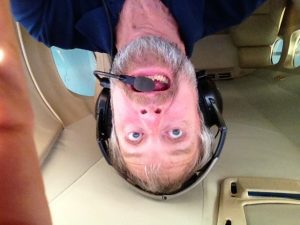
From the desk of Mitch Callaghan:
In my 26 years in the aviation business, starting while at Brant Aero during my high school co-op, I have had many different experiences and opportunities. I’ve been blessed to have had the opportunity to work on many different types of aircraft from ultra lights to DC-3’s and Jet aircraft like the Aero Vodochody L-29, Mig 15, Fouga Magister & Citation 525 & 550. I’ve seen Buffalo Joe take a stored Millard DC-4 and bring it back to life – watching the guys prep the engines for their first run with our hangar doors open, the guys in T-shirts in Mid November. Films made at the airport more than once. Helped make a customer’s Yak-52 ready for Zombie fighting in the movie “Resident Evil: Afterlife”.
But one of the most memorable moments was traveling from Brantford to Aurora, Illinois in an L-29 to inspect a Mig-21 we found for sale for $25,000 USD. During that trip we were in the FBO waiting to pay for fuel when we noticed a “loud” personality with us in the room. We got to speak briefly with Ted Nugent, who was getting ready to leave for a hunting trip. I remember getting a bit worried as we cleared customs that trip, when the customs agents came to clear us and one agent had a Geiger counter – being that we were in the Post-Cold War era in a Czechoslovakian-built ex-Russian military aircraft… all went well though. Oh, one more tip from my experiences… Never eat chicken fried steak just because it’s President Bush’s favourite dish (Waco, Texas).
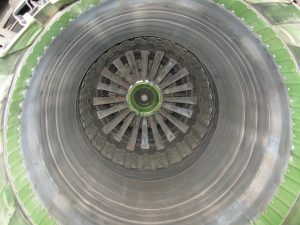
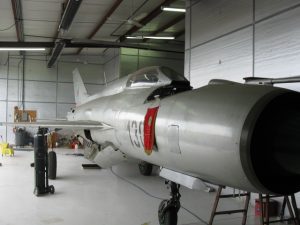
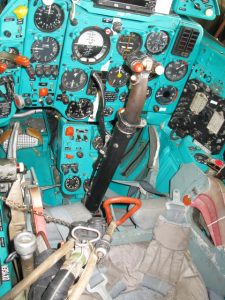
From the desk of Josh Pegg:
In my 12 years in the aviation business I have seen and done many things, but one of the greatest things that sticks out in my mind is the connection I have with our Air Show community. Through volunteering and hard work over the last 6 years, I have become an established Air Boss, whose primary job is to help facilitate and execute a safe and entertaining Air Show. Through this process I’ve been lucky enough to get to know some of my aviation heroes, and call most of them my friends. This ranges from the Canadian Forces Snowbirds, and Hornet demo teams, to world-class civilian air show performers like Pete McLeod, Kent Pietsch, and the well-established warbird community. Pilots like Scott “Scooter” Yoak with his beautiful P-51 Mustang “Quicksilver” and the Redtail Squadron in the Commemorative Air Force with their P-51C painted to honour the Tuskegee Airmen.
One such instance jumps out in my mind. While at a convention for the air show industry, I had the distinct honour of meeting Brig. Gen (Ret.) Charles McGee. He was a member of the African-American squadron in WWII known as the Redtail’s. These trailblazing men proved that it doesn’t matter what colour or creed you are. And the courage it must have taken them to do what they did in the early 40s is something I can’t begin to fathom, let alone being shot at simultaneously! Getting to meet our greatest generation, listening and learning from them is one the best parts of this business. Playing a small part in keeping them flying (by helping put on air shows) to keep the history alive is also a tremendous honour.
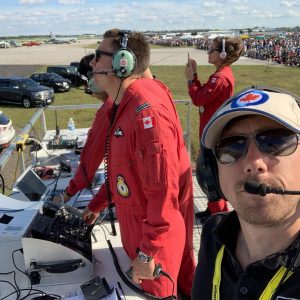
From the desk of Dan Houison:
In my 24 years in the aviation business, my craziest experience was heading off to Abu Dhabi and Dubai, alone for a month, to install microwave transceivers in the early 2000’s (just post-911). Being so far away from any support structure was very nerve-wracking. Spending a month in the desert, inside a military base, inside an oil refinery can become very challenging. Firstly, not knowing the language. And secondly, trying to get into and out of a military base, then (even harder) trying to get in and out of an oil refinery every day. The people at the gates were always different and the rules were always different, changing each day.
I got through it, made some friends, and made it home – 26 hours door to door. It was definitely the challenge of a lifetime!
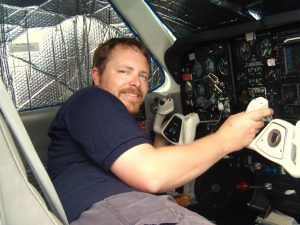
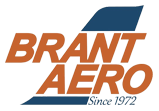
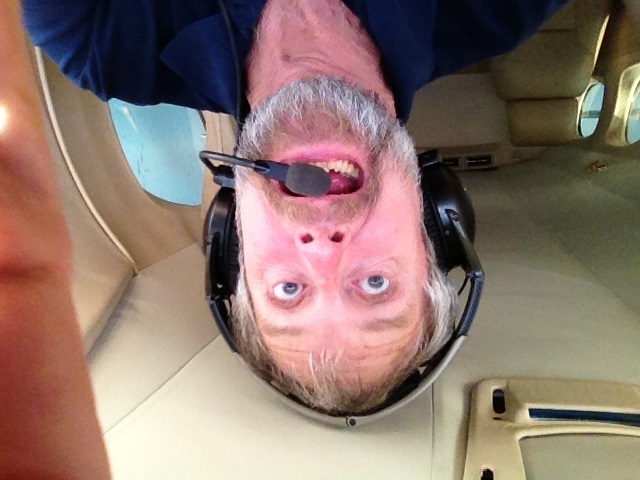
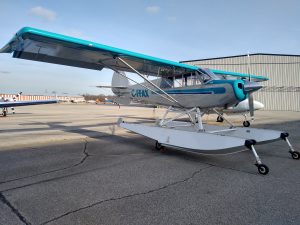
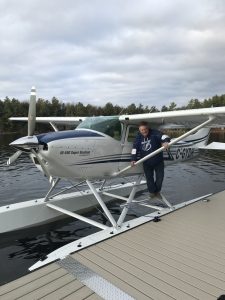
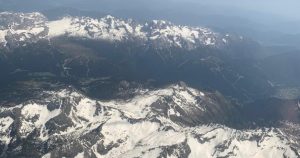
Barry Hart
Jun, 12, 2020I am disappointed that working on a C-182 wren did not stand out as a life memory. Perhaps it was so huge that you have all blocked it out.
Good stories.
Miss you all.
Now flying a float PA 18 Super Cub on floats. (My bicycle has a more complex panel).
Blessings to you all.
BH